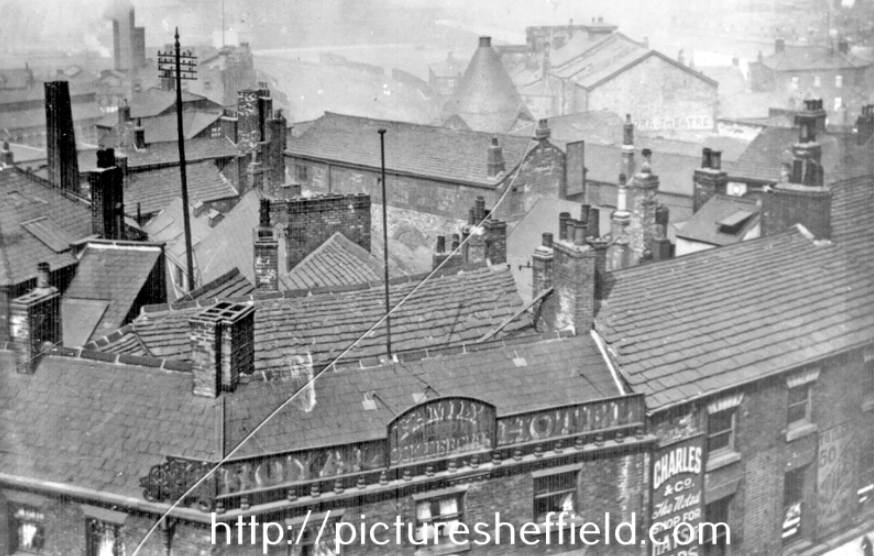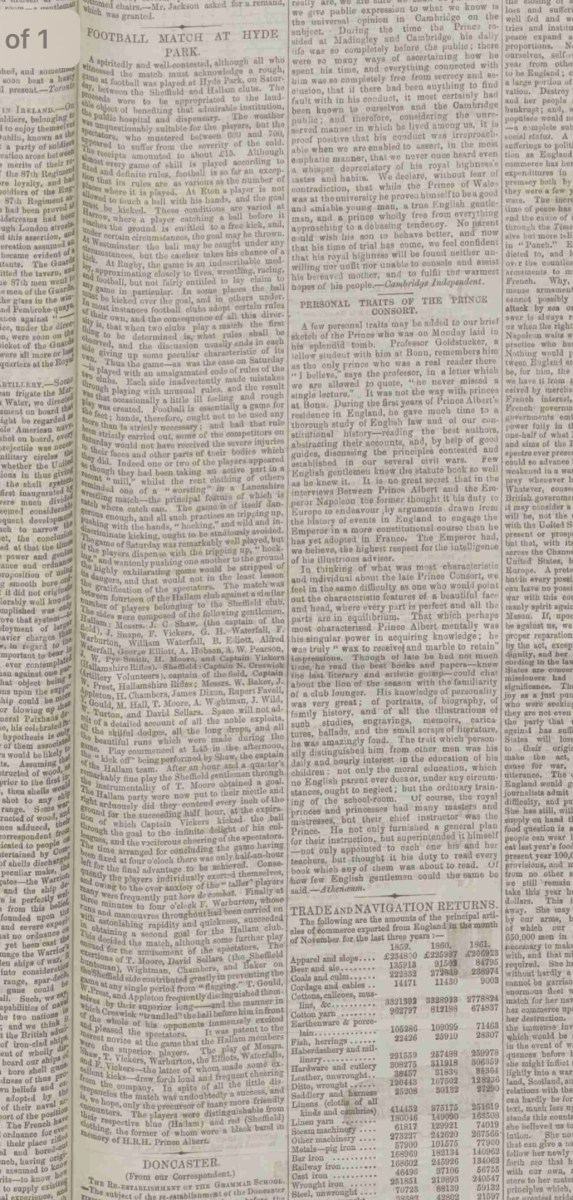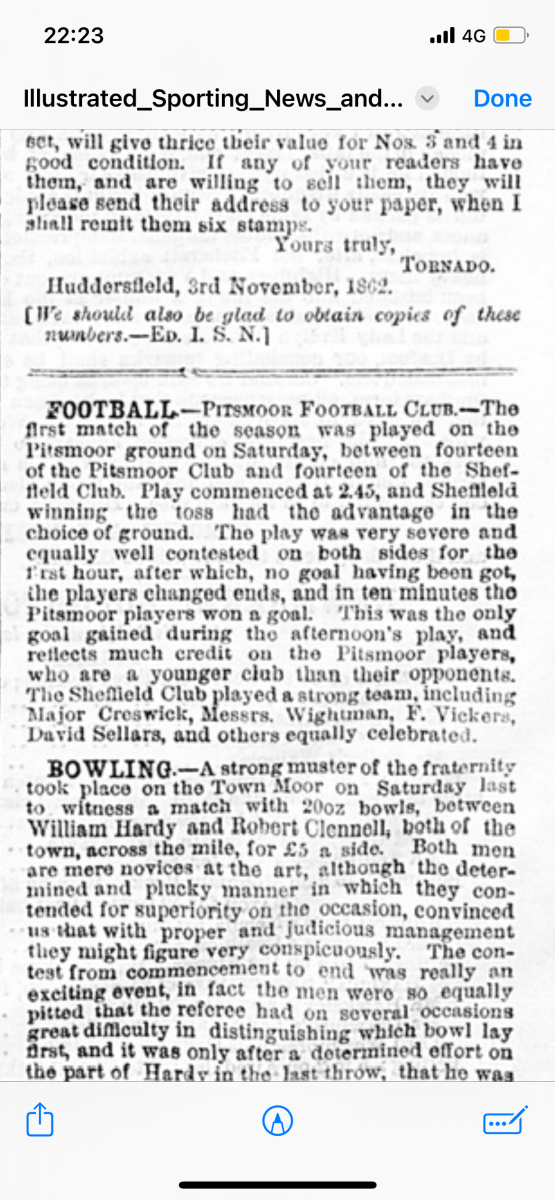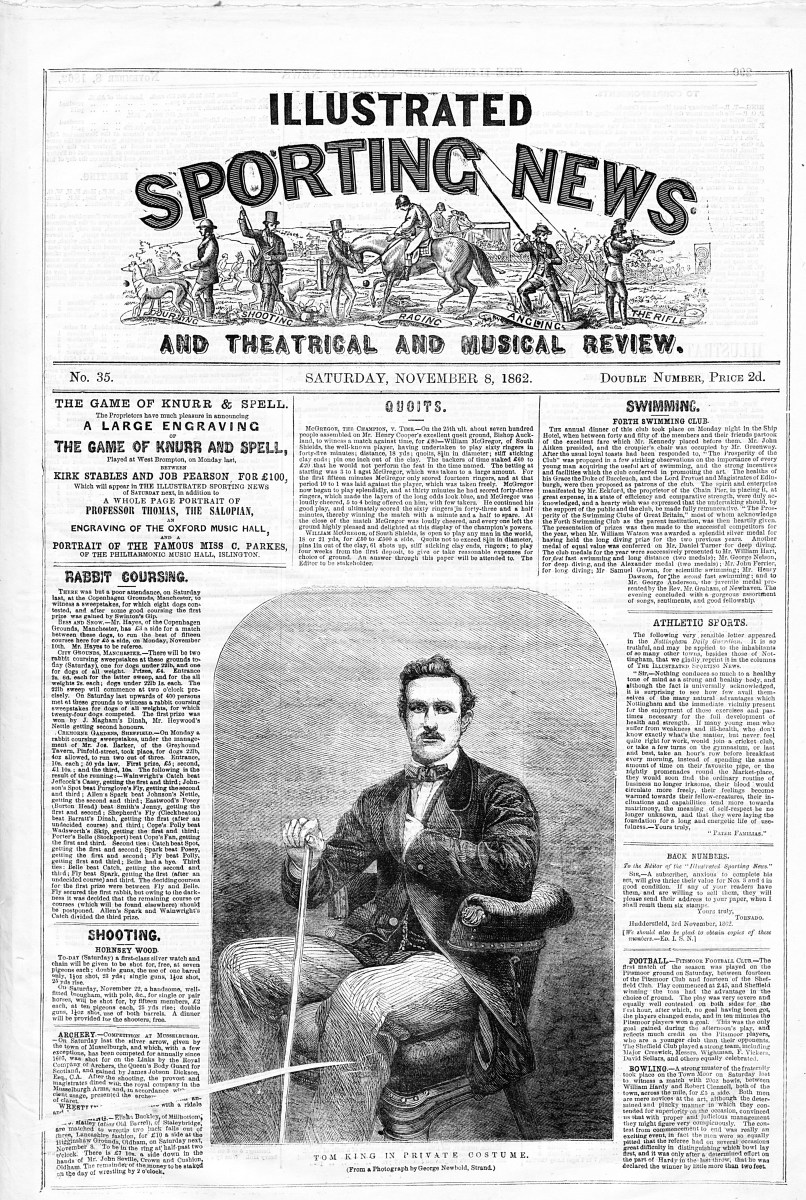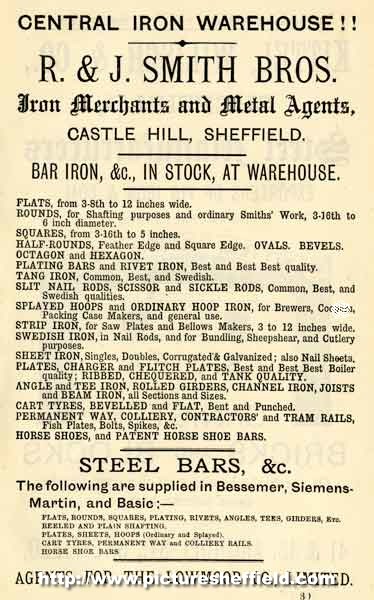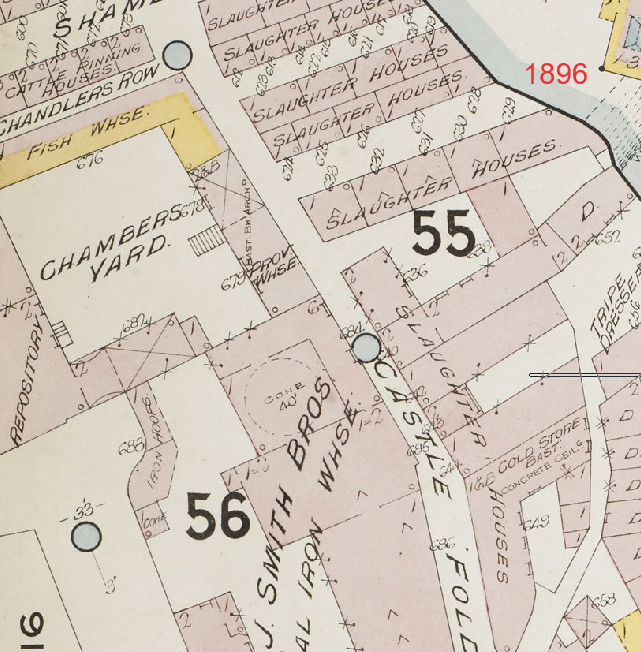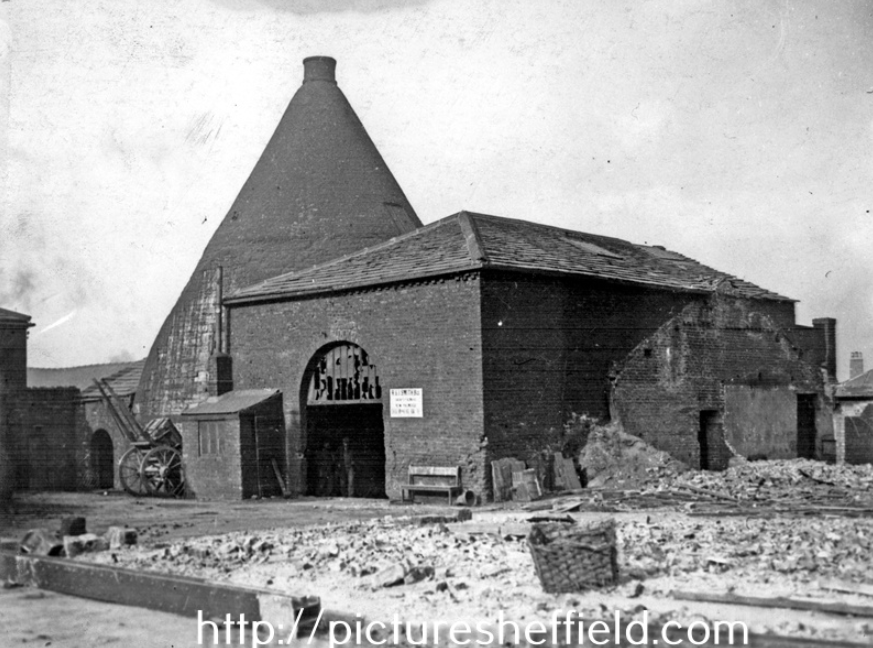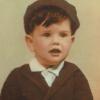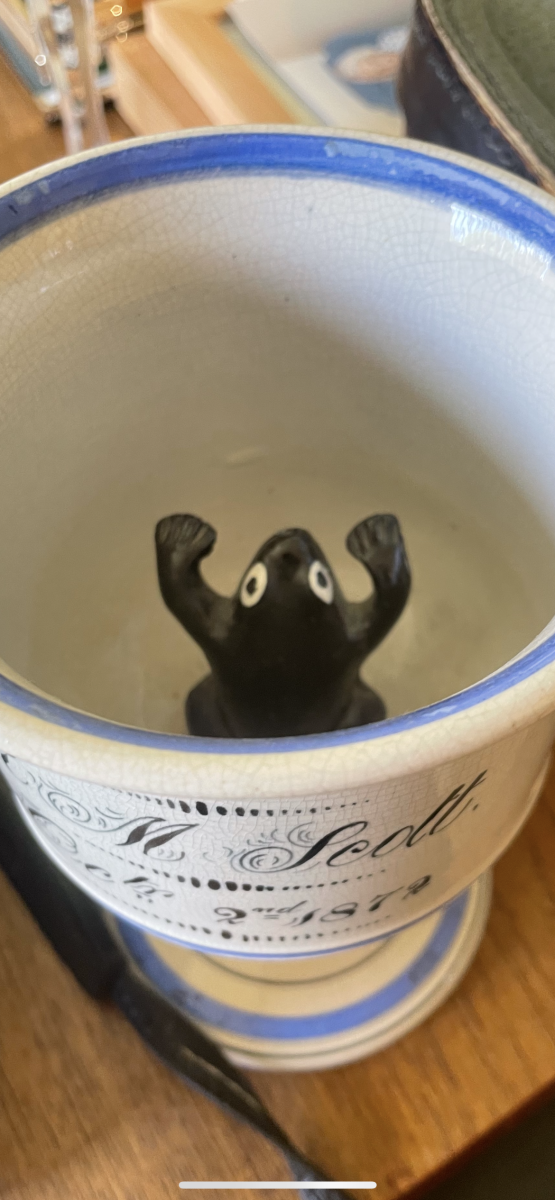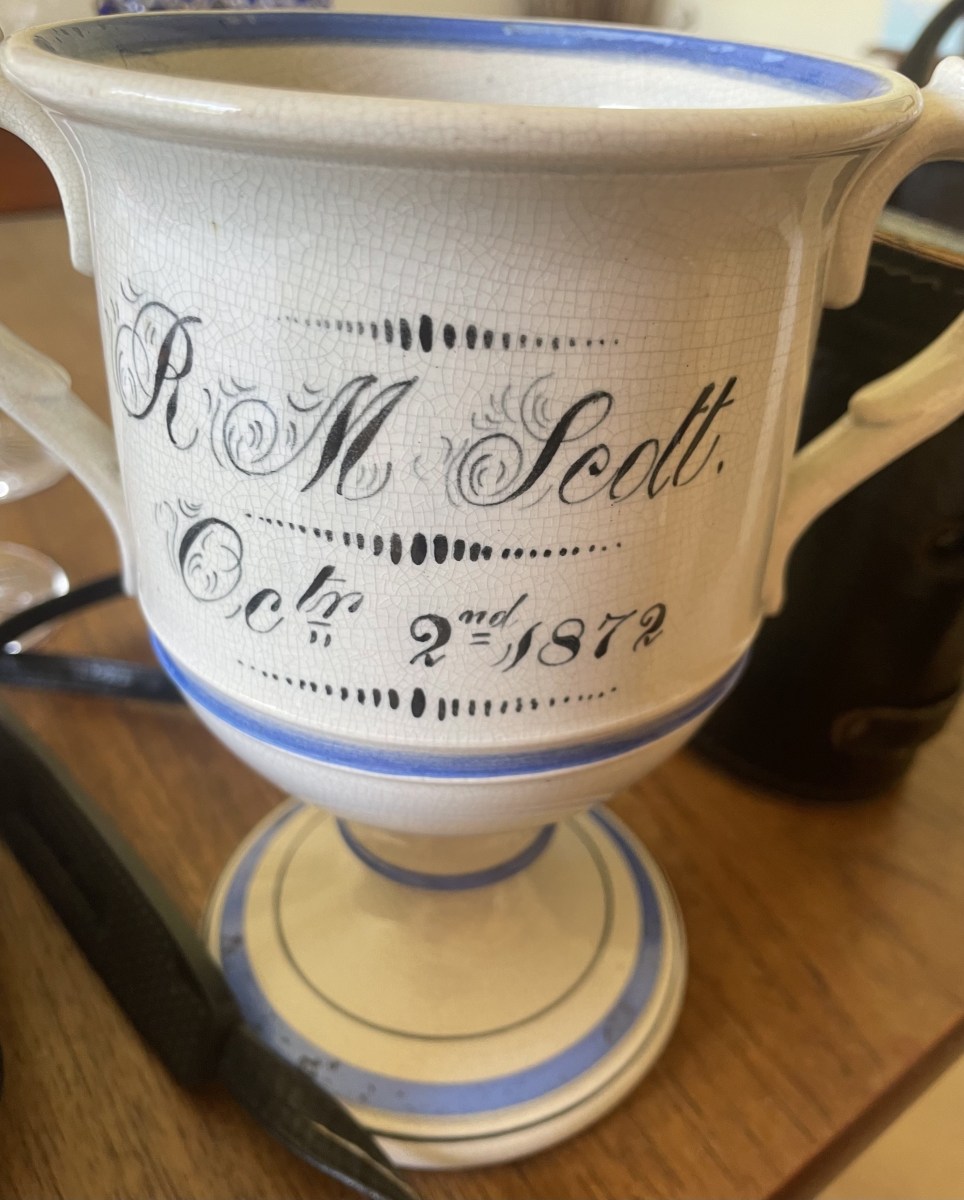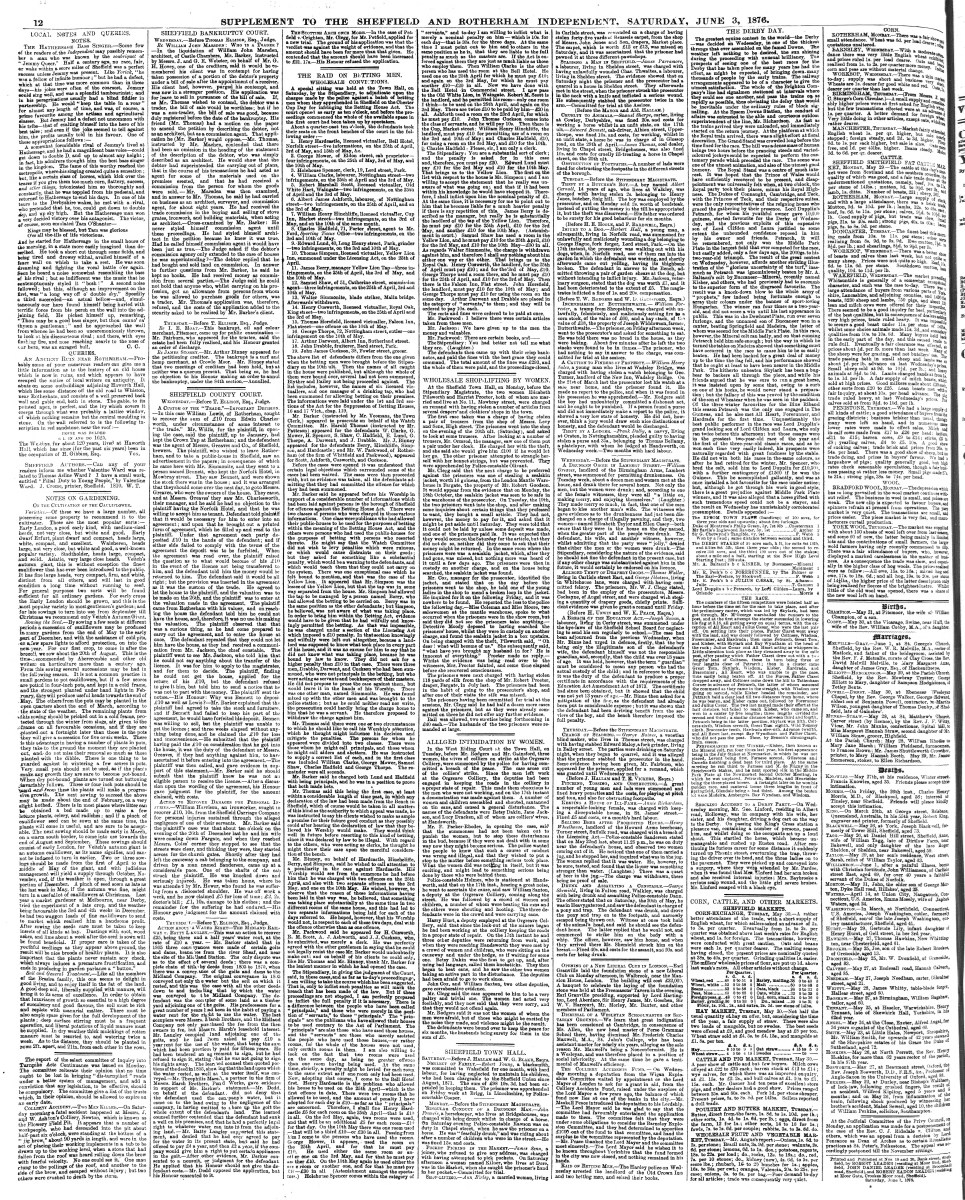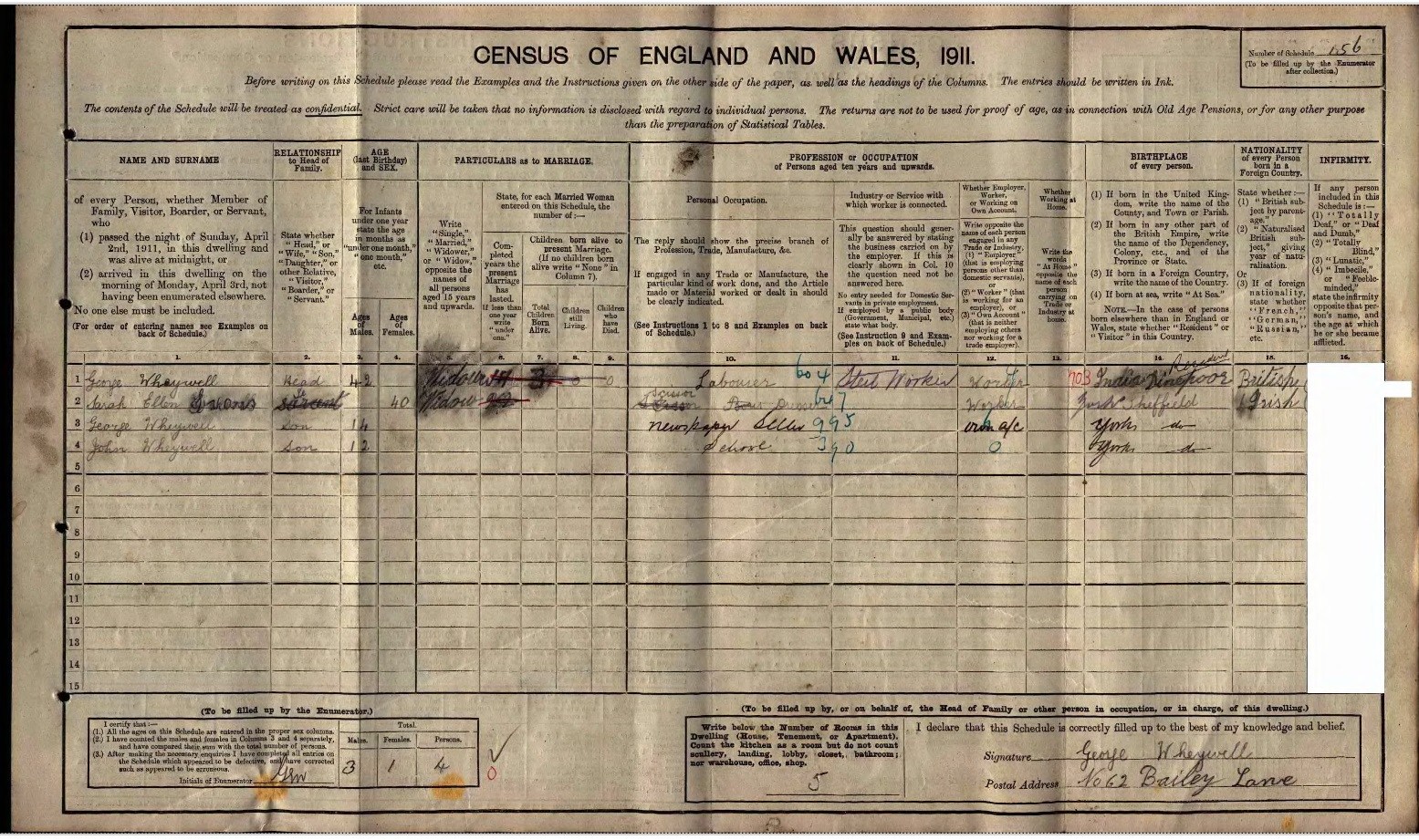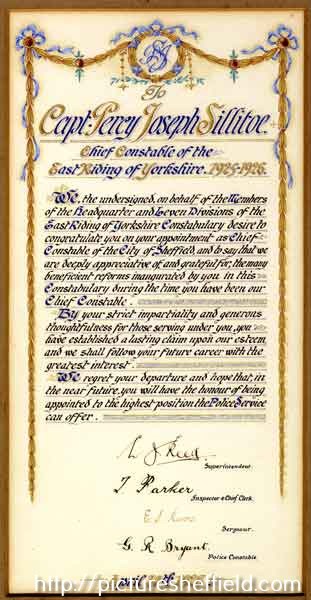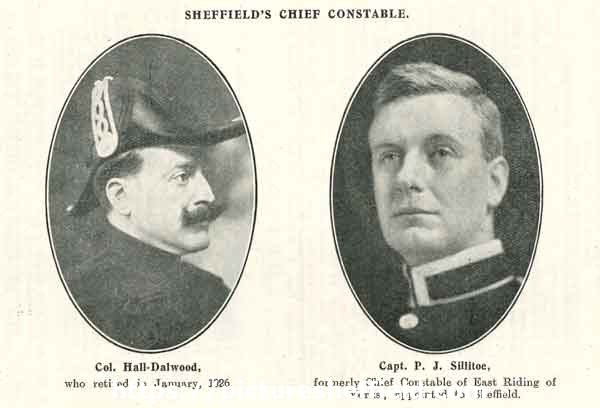All Activity
- Past hour
-
Sorry for late reply, don’t know if you’ll see it but the farewell I mentioned (son of the Sheffield huntsman and footballer) in my tree was actually 1851-1908 and the next farewell I can recall or found would’ve been his nephew born 1909 son of Thomas David Sellars, although I think he was called Harold farewell. I do know there was a different sellars family at the same time of 155 Stannington Road though if that helps, the ones I mentioned would be all walkley area.
-

Upwell Street in the Daily Mirror 1940 wartime fun
Aaron James Hartley replied to Aaron James Hartley's topic in Sheffield History Chat
- Today
-
Lysanderix started following Upwell Street in the Daily Mirror 1940 wartime fun
-

Upwell Street in the Daily Mirror 1940 wartime fun
Lysanderix replied to Aaron James Hartley's topic in Sheffield History Chat
A fascinating story. I bet breakfast was interesting…..can’t get a date from the clipping but reading about our “ BEF heroes” I imagine it was dated during the so called Phoney War period. -
Aaron James Hartley started following Upwell Street in the Daily Mirror 1940 wartime fun and Hallamshire Harriers various newspaper clippings
-

Hallamshire Harriers various newspaper clippings
Aaron James Hartley posted a topic in Sheffield Websites
-

Upwell Street in the Daily Mirror 1940 wartime fun
Aaron James Hartley posted a topic in Sheffield History Chat
My Grandfather used to say “we were in the newspaper as kids, we were the first on the street with shoes” We found the article so I thought I’d share for a bit of fun, he wasn’t far off with his tales bless him. -

Sheffield Castle - Excavating the Castle ruins..
Lysanderix replied to Sheffield History's topic in Sheffield History Chat
R&J Smith Bros. was a going concern during the 1960s. At that time ,they never produced an ounce of steel ,being purely steel stockholders and merchants …as the advertisement Ponytail provided indicated. They were taken over by another merchant and, like so many other similar companies ,closed for ever during the decline of Sheffield as a steel centre! - Yesterday
-
John Russell started following Sheffield Castle - Excavating the Castle ruins..
-
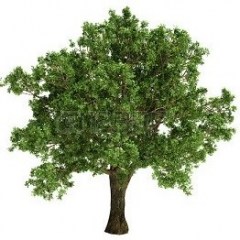
Sheffield Castle - Excavating the Castle ruins..
John Russell replied to Sheffield History's topic in Sheffield History Chat
My Great & 4 Grandad, Joseph Turner, and his Father John Turner, had premises on Castle Hill in the early to mid 19th Century. He later grew the business and moved to John Street in the 1870s. This was his card. I'd be interested if anyone can tell me where exactly these premises were on Castle Hill. -

Sheffield Castle - Excavating the Castle ruins..
Edmund replied to Sheffield History's topic in Sheffield History Chat
This seems to be a different furnace, though still on Smith Brothers' premises. from Sheffield Daily Telegraph 30th March 1915: ANCIENT FURNACE ON SITE OF SHEFFIELD CASTLE The Sheffield Corporation workmen engaged on the construction of the new road from the Great Central Station have unearthed on Sheffield Castle site the lower part of a steel furnace. It stands in what was formerly the yard of Messrs Smiths' Steel Works. The furnace is solidly built of rubble stone with a strong course of heavy gritstone, and is in shape a square truncated mound. The structure has four firing holes, and was built probably about the year 1800. It is not likely that its origin is earlier because the older engravings of the locality do not show the furnace. The building, however, is indicated in a sketch of Lady's Bridge which appears in Mr. Thomas Winder's work "T'Heft an Blades o' Shevvield" Incorporated in the masonry are slabs of the old stone from the castle. Among the ancient relics which the workmen have found have been an iron door crank, and a piece of glass from the castle windows, possibly 400 years old. These, along with portions of dressed stone and door moulds, are being taken care of by the Corporation. Later excavations may be carried out on what was the castle moat with the view of searching for objects of antiquarian interest. This photo appears in other places but with dubious dates attributed to it. -

Sheffield Castle - Excavating the Castle ruins..
Edmund replied to Sheffield History's topic in Sheffield History Chat
Here's another photo of the furnace in context with the surrounding buildings ( Circa 1900 Castle Hill ) In 2016 Wessex Archaeology excavated part of the site ( 2016 Excavations ) Their Trench 1 which included part of the cone site found pieces of ‘crozzle’, (residue produced from furnace lining made from wheelswarf) and pieces of ganister, providing evidence to support the proximity of Trench 1 to a furnace. They stated that "No [documentary] evidence of steel production by R. & J. Smith could be found and it seemed likely that the furnace shown on Goad’s 1896 map was decommissioned and possibly later demolished during R. & J. Smith’s tenure of the site." -
Sheffield History started following Seaton in Cornwall is a beautiful coastal town!
-
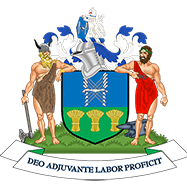
Seaton in Cornwall is a beautiful coastal town!
Sheffield History posted a topic in General Chat (Anything Goes)
- Last week
-
Aaron James Hartley started following Sheffield FC
-

Sheffield Castle - Excavating the Castle ruins..
Ponytail replied to Sheffield History's topic in Sheffield History Chat
This Map covers the area in question. Sheffield - Wain Gate, Castle Folds, Hay Market and Dixon Lane, c. 1790. https://www.picturesheffield.com/frontend.php?keywords=Ref_No_increment;EQUALS;arc04278&pos=27&action=zoom&id=105920 Also marked are River Sheaf, Hospital Bridge, River Don, Ladies Bridge and Chandlers Row. Marked: John Ashmore, John Wilkes, William Green, Joshua Wigfull, and Luke Gray. Plan of Castle Hill area showing position of buildings and streets, surveyed 1889. y00870 Taken from 'Sheffield Castle Excavations', by J.B. Himsworth, Local Studies Ref: 914.274 SQ. -

Sheffield Castle - Excavating the Castle ruins..
Ponytail replied to Sheffield History's topic in Sheffield History Chat
Advertisement for R. and J. Smith Bros. Ltd., iron merchants and metal agents, Castle Hill. 1889. y11912 Image from Sheffield and Neighbourhood (page 39) (printed and published by Pawson and Brailsford, Sheffield, 1889) (Sheffield Local Studies Library: 914.274 S). -

Sheffield Castle - Excavating the Castle ruins..
Ponytail replied to Sheffield History's topic in Sheffield History Chat
Checking on the above photograph, it's Picture Sheffield No. u00917 R and J Smith Brothers Ltd, 51 Bridge Street, photographed by City Engineers Department. Information would more than likely be written on the original photograph, from which the information could have been obtained. Bridge Street, would I think come into the "Wicker" area on the Street Map used to reference the location. Further Information recorded as addition information with the image came from Mark Brocket, "I believe that this company were a wholly owned subsidiary of William Rowland Ltd., certainly around 1938 and were metal processors." Certainly, it would be good to investigate this image further. A check of Street Directories would be useful. I would have thought the Archaeologists had consulted the map previously, perhaps the BBC needs to clarify their report. -

Sheffield Castle - Excavating the Castle ruins..
Edmund replied to Sheffield History's topic in Sheffield History Chat
I'm not sure that the steel furnace was undocumented. The insurance map from 1896 shows a 40 foot cementation cone on the premises of R and J Smith Brothers. This photo appears to be the same cone although the PictureSheffield notes say it's in the Wicker area. ( R and J Smith Brothers Cone ) -

Sheffield City Airport
Lysanderix replied to Lysanderix's topic in Sheffield Buses, Trams and Trains
Wesley Airport has a nice ring to it…but, I wonder, how many of todays travellers will have heard of him.? My view is that the proud Burghers of the City of Doncaster will go for that name as a bit of an insult to its bigger neighbour. Having for a few years worked in the Doncaster area ,I must confess amongst those I met Sheffield wasn’t liked…except for Meadowhall…..and locals couldn’t see why Sheffield was included in the name of their airport… Sheffield appears to have washed its hands of aviation…becoming ,as was threatened in the 1950s by the then Chairman of BOAC...an Aviation Wilderness”……having closed its own City Airport after refusing to join other authorities .,years ago.,in creating East Midlands Airport and being very quiet over the desirability of re opening Finningley.. -
Lysanderix started following Sheffield Betting ring raids of 1876, various Sheffield pubs
-

Sheffield Betting ring raids of 1876, various Sheffield pubs
Lysanderix replied to Aaron James Hartley's topic in Sheffield Pubs and WMC's
My first employers had a workman who took and laid bets. He was crippled following a War wound and I reckon that was why Management turned a blind eye to his activities. I imagine other steelworks had similar entrepreneurs! -
UPDATE:- As soon as the new admin block had been finished in 1899, the old block was demolished the building of the new central block was started. By July 1902 it was finished and was in use. This new block contained five new wards all of the five wards all of which were named after past benefactors of the hospital and one was the 'May' ward. At this stage I can only confirm three of the five wards on the new block I dont know which of the wards listed below were the other two. A list of all wards are in the Royal Hospital Annual reports: Arthur Jackson Ward, Littlewood Ward, May Ward, Casualty Ward, Bingham Ward, Bernard Wake Ward, Norfolk Ward, Fred Osbourn Ward, Arthur Hall Ward, Keeling Eard, & Edgar Allen Ward Thank you for all the input it is very much appreciated.
-

Sheffield Castle - Excavating the Castle ruins..
Ponytail replied to Sheffield History's topic in Sheffield History Chat
Undocumented steelworks unearthed at Sheffield Castle Site. https://www.bbc.co.uk/news/uk-england-south-yorkshire-68899320 -

Sheffield Betting ring raids of 1876, various Sheffield pubs
Aaron James Hartley replied to Aaron James Hartley's topic in Sheffield Pubs and WMC's
Also kind of related, i’ve been trying to find some information out about this jug, or what the date may resemble, with no success. I thought it maybe a Victorian drinking game, fuddle cup. The date on it does seem to match with the pub on waingate though. -

Sheffield Betting ring raids of 1876, various Sheffield pubs
Aaron James Hartley replied to Aaron James Hartley's topic in Sheffield Pubs and WMC's
-

Sheffield Betting ring raids of 1876, various Sheffield pubs
Ponytail replied to Aaron James Hartley's topic in Sheffield Pubs and WMC's
Yes Edmund, it seems Henry Steel made his money from "betting" at the same period in history as the Publicans in the original post, who were being taken to court for being "bookmakers" Using his gains to finance a steel firm. https://sheffielder.net/2020/04/10/henry-steel/ Not sure of the law on betting at the time, hope someone can enlighten us. -

Sheffield Betting ring raids of 1876, various Sheffield pubs
Edmund replied to Aaron James Hartley's topic in Sheffield Pubs and WMC's
Presumably Henry ran Steel Peach and Tozer. He lived at Tapton Court on Shore Lane. -
-

Sheffield gangs and gang wars
Ponytail replied to Sheffield History's topic in Sheffield History Chat
Illuminated letter to Captain Percy Joseph Sillitoe (Chief Constable of the East Riding of Yorkshire) congratulating him on his appointment as Chief Constable of City of Sheffield. 29th April 1926. arc02603 Signed by: L. J. Reed, Superindentent; T. Parker Inspector and Chief Clerk; E. S. Ross Sergeant; G. R. Bryant Police Constable. Sir Percy (22 May 1888 - 5 April 1962) was born in London in 1888. He served in the South Africa Police, later becoming Chief Constable of Chesterfield in Derbyshire and then the East Riding of Yorkshire. He was appointed Chief Constable of the City of Sheffield in 1926. He served in Sheffield for 5 years and was well known for dealing with the violent gangs which were active in the city. In 1931 he was appointed Chief Constable of Glasgow. He was appointed CBE in 1936, knighted in 1942 and in 1943 was put in command of the new joint Kent force. He became Director General of MI5 in 1946. Original at Sheffield City Archives: X462/1. Colonel Hall-Dalwood, retiring Chief Constable of Sheffield and his successor, Captain P. J. Sillitoe. 1926. y14017 Image from Sheffield Year Book, 1927 (Sheffield Local Studies Library: 032.74 S)




















